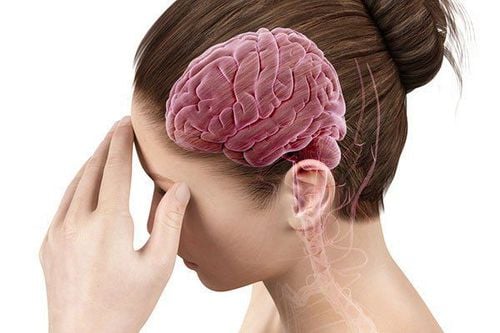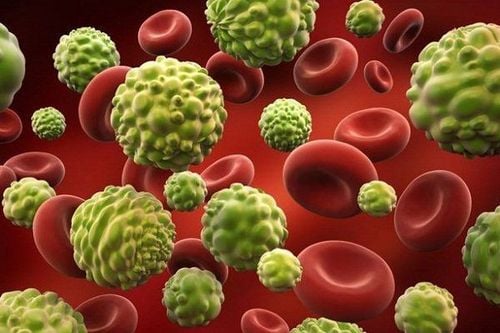This is an automatically translated article.
Glioblastoma is a malignant tumor that progresses rapidly and has a poor prognosis. If the disease is not treated promptly and properly, the patient will soon fall into a serious condition. This type of tumor is also a major challenge for treatment. However, it is not without treatment.1. Glioblastoma
Glioblastoma of the brain is one of the primary neoplasms of the central nervous system. This is a fast-growing glioma, formed from either astrocytes (astrocytes) or oligodendrocytes.
The disease usually occurs in people aged 45 to 70 years, the incidence of glioblastoma multiforme is 2-3/100,000 adults and accounts for about 52% of all primary brain tumors. broadcast. Overall, glioblastoma multiforme accounted for 17% of all brain tumors (primary and metastatic)
Glioblastomas are often considered grade IV astrocytomas, have a poor prognosis, progress rapidly growing and very malignant. If the patient is not detected early and treated properly, it will cause complicated and unpredictable disease progression and reduce the patient's survival time.
2. Symptoms and Diagnosis

Bệnh u nguyên bào thần kinh đệm xảy ra chủ yếu ở hai bán cầu đại não
Glioblastoma occurs mainly in the two hemispheres of the brain, especially in the frontal and temporal lobes. Symptoms vary depending on the location of the tumor. Due to its destructive nature of brain cancer, if patients see the following symptoms, they should immediately go to the hospital for testing and early detection of the disease: Continuous headache; double vision or blurred vision; vomit; not eating well; changes in emotions and temperament; changes in the ability to think and learn; new seizures; talking difficult with gradual progress..
When going to the hospital for diagnosis, the patient will be tested by the doctor, taking layers with the most modern and advanced machines and techniques, in order to give accurate images. about the location of the tumor. Diagnostic tools include computed tomography (CT scan) and magnetic resonance imaging (MRI). Intraoperative MRI may also be useful during surgery to guide tissue biopsies and tumor removal. Magnetic resonance spectroscopy (MRS) is used to examine tumor chemistry, with Positron tomography (PET scanner) being useful in detecting tumor recurrence.
3. Treatment

Việc điều trị u nguyên bào thần kinh gặp nhiều khó khăn đền từ cả người bệnh lẫn các loại thuốc điều trị
Glioblastoma is a big challenge for the medical industry, the treatment of the disease faces many difficulties from both the patient and the therapeutic drugs. Even in advanced countries in the world like the United States, each year there are about 15,000 deaths. Even if the tumor responds to treatment, the risk of recurrence is very high because cancer cells hide in nearby brain tissue as glioblastoma stem cells (GSCs), making the disease incurable.
Most patients will be treated in the following order: Surgery, then radiation and chemotherapy. Glioblastoma multiforme is often surrounded by an area of metastasis, where cancer cells invade surrounding tissue, so surgery is needed to remove as much of the tumor as possible.
3.1 Surgery However, surgery will not completely remove the tumor. Surgery only limits damage to the surrounding normal brain tissue needed for neurological function, and at the same time, can help prolong survival in some patients and improve quality of life over time. remaining.
3.2 Radiation Therapy Then, when the surgical wound has healed, the glioblastoma patient undergoes radiation therapy. Radiation therapy helps to selectively destroy any remaining tumor cells around normal brain tissue. However, either radiation therapy or surgery can cause damage to both healthy and normal tissue.
3.3 Chemotherapy Finally, the patient undergoes chemotherapy, which, for long-term tumor control, only does this for about 20% of patients. The patient is given special drugs that are created to destroy cancer cells.
However, through surgical methods, radiotherapy and chemotherapy, it can only improve the average survival time of patients by 3 months.
4. Zika virus vaccine for glioblastoma
Glioblastoma is a difficult cancer to treat, but with the advancement of medicine, American scientists have discovered that using the Zika vaccine can treat this disease.
US researchers used mice with glioblastoma for experiments and showed that Zika virus can attack GSCs in the laboratory. They also found that the Zika virus was less active in attacking brain tissue that had differentiated into different cell types.
From the above research, they developed a vaccine called ZIKV-LAV that is given to the patient at the time of surgery so that the virus can "hunt for GSCs and eliminate them", thereby preventing prevent tumor recurrence.
According to scientists, to make this vaccine they weaken the virus or delete a small part of the genome to prevent it from replicating easily. In a rat test where half of the mice were injected with human-derived GSCs, the other half were also injected with GSC but supplemented with ZIKV-LAV. The results showed that the mice that received only GSC developed tumors rapidly, but the mice that received the GSC plus the vaccine had significantly delayed tumor growth and significantly longer survival.
Customers can directly go to Vinmec Health system nationwide to visit or contact the hotline here for support.
MORE:
Professor Nguyen Thanh Liem advises on stem cell and cancer immunotherapy USA) built the first Center of Excellence in Cardiology and Oncology in Vietnam













